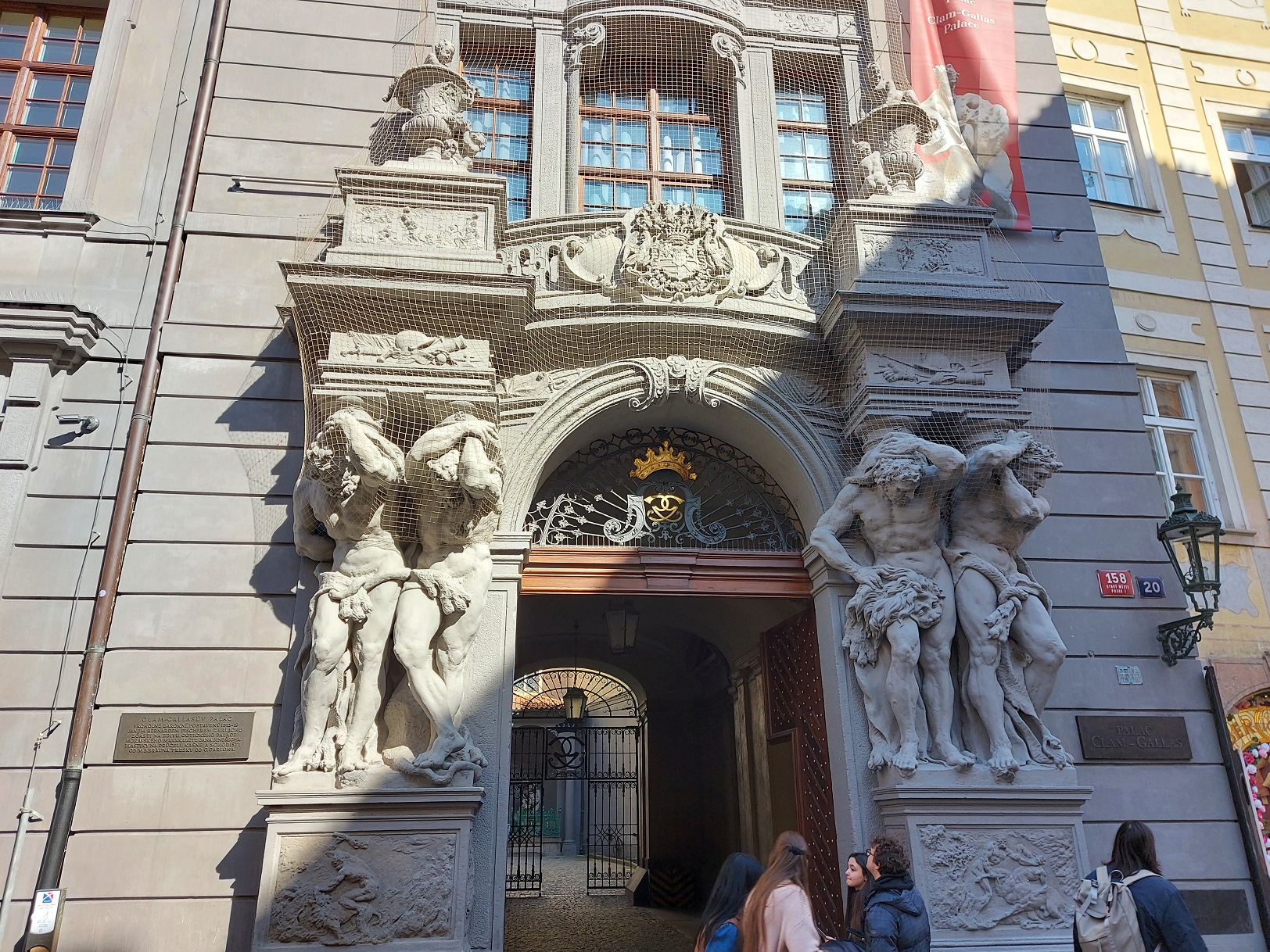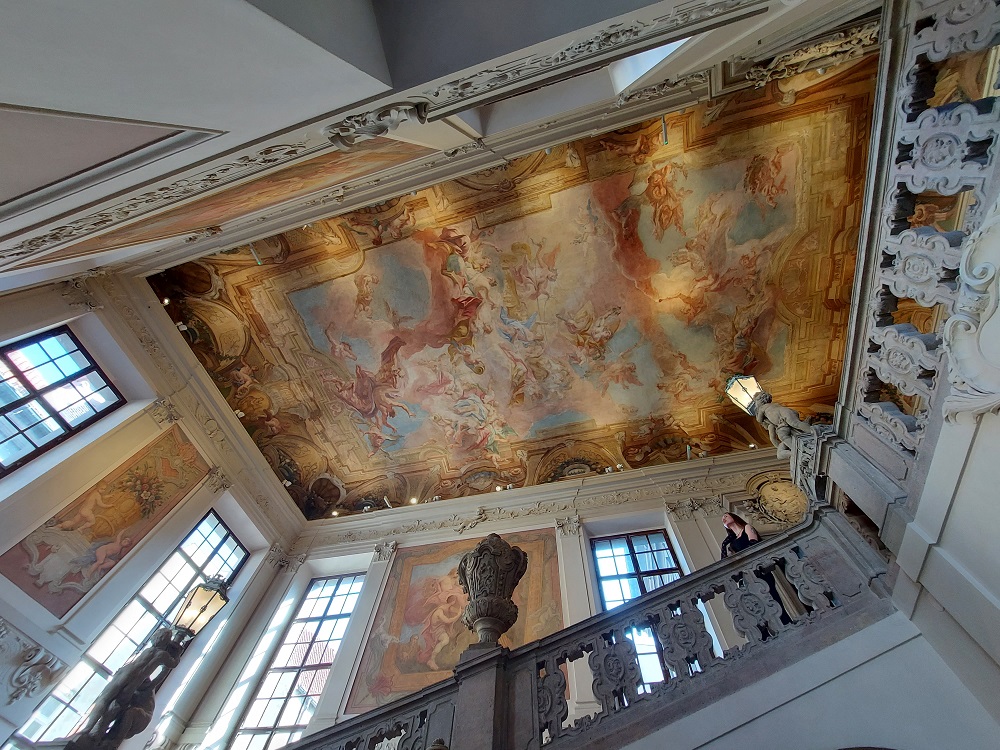Prague’s Clam-Gallas Palace
When I was last in Prague last spring, I was surprised to see that Prague’s Clam-Gallas Palace was open to the public for visits. Sadly, in the days I was there, it was undergoing some renovations and was not open to visitors.
So when I returned this year, I made a point of going to see the palace.

I lived in Prague many years ago. If I want to date myself, I moved there when it was still Czechoslovakia. (Gulp!)
This palace set on a narrow street in Starometska (Old Town) always fascinated me, with its dramatic statues flanking the entry way of a grand palace that was falling apart and in desperate need of renovation.

In my early days in Prague, when I was still getting lost on those twisty streets, those colossal statues were a handy landmark for me. Soon enough, I learned my way around, but in those early days, I appreciated the familiar landmark.
Back then, the palace wasn’t open to the public. So when I saw that renovation work had since been done and it was welcoming visitors, I was excited to have a chance to finally see glimpses of the inside.

The Clam-Gallas Palace is considered an excellent example of Baroque architecture. I loved its grand staircase and stunning rooms – especially the ballroom with its classic Bohemian crystal chandeliers and the ingenious orchestra room-type-closet hidden behind a grate. As the guide told us – an early version of radio.
The palace was first designed by Viennese imperial court architect Johann Bernhard Fischer von Erlach and built between 1714-1718, under the direction of Italian architect Domenico Canevale. Both Mozart and Beethoven attended balls here.

It was originally built for the Gallas family, but the family line came to an end in 1757, and the property reverted to the Clam family, specifically the son of Gallas’ sister … ushering in the Clam-Gallas name.
Today, the palace belongs to the city. It’s worth a visit when you’re next in Prague. After years of admiring its exterior, I was happy to finally have the chance to explore the interior.
